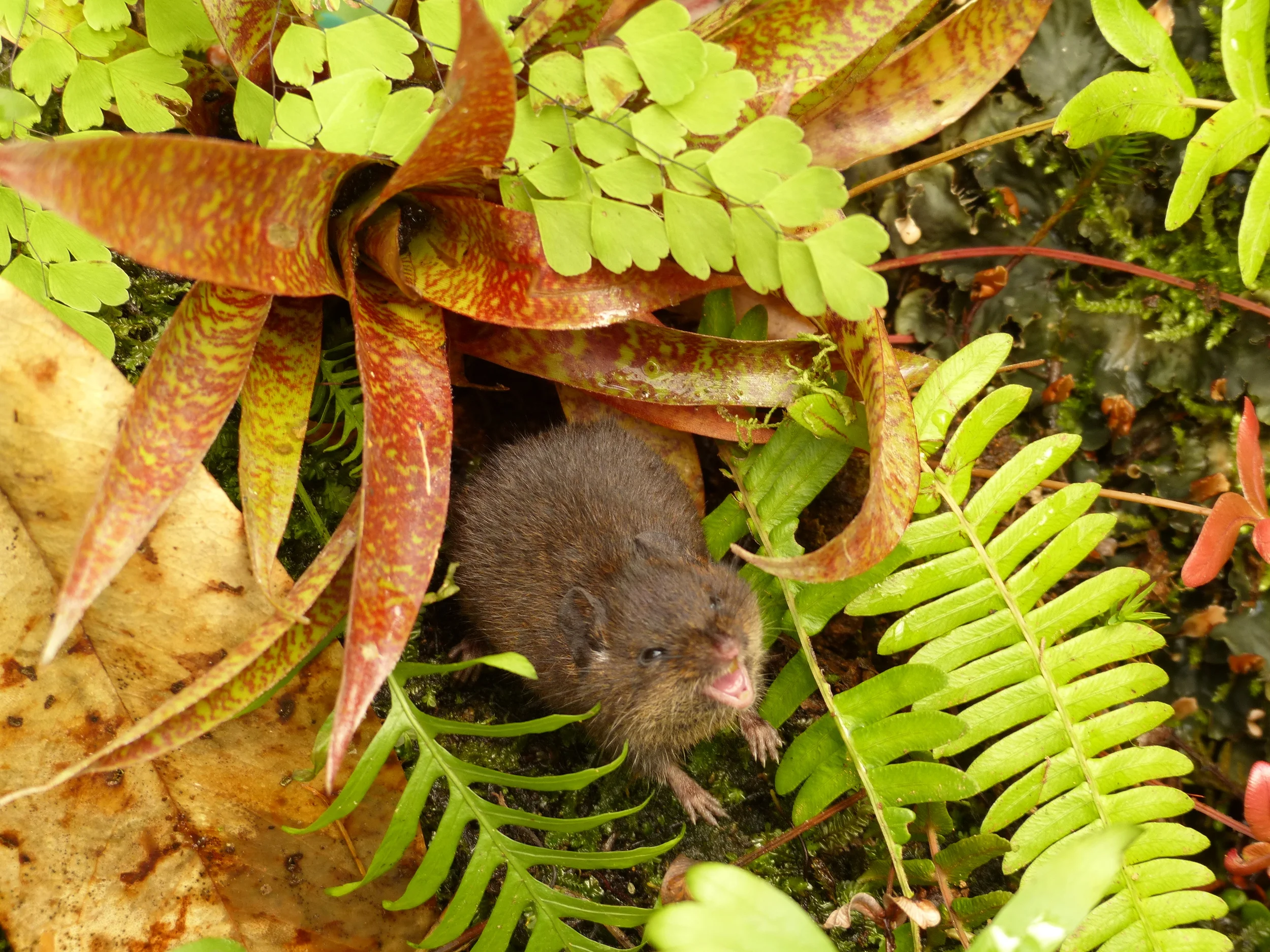Why singing mice?
Vocalizations are tremendously useful tools for the study of social cognition. They can be recorded, measured, synthesized and played with tremendous accuracy. This allows us to investigate some subtle but consistent ways in which songs differ reliably among individuals, populations or species, and observe the consequences of song variation on the listener. The songs themselves are a series of rapidly repeated frequency-modulated notes that sound like the song of a small bird or insect. While many mice vocalize in the ultra-sound, it’s unusual that the song is at frequencies low enough to travel substantially in the wild (~20m) and to be heard by the human ear. Songs of our focal species, Scotinomys teguina, can be up to 16 seconds long. Because the songs are used in mate attraction and male-male competition, they provide an interesting opportunity to investigate how elaborate signals emerge from sexual selection and related processes. Moreover, since there is more than one species of singing mouse, we can investigate what happens when two species co-occur, as happens in Costa Rica. Species recognition is not only an interesting problem in social cognition, it is also of major importance to the process of speciation. Lastly, the wealth of data on rodent genetics and neurobiology provides an excellent starting place for understanding the mechanisms that underlie ecological variation in behavior.
Sonograms of Scotinomys songs.
Perfect habitat: fallow pastures and forest draped in clouds.
The natural history of singing mice
The singing mice live in high altitude montane cloud-forests and grasslands spanning from western Panama to southern Mexico. Strangely, they are diurnal and insectivorous – two unusual traits that happen to coincide with the elaboration of song. One species, Scotinomys xerampelinus, lives in the highest mountains in Costa Rica and Panama, going down to as low as 2000m or so. Our focal species, Scotinomys teguina, generally lives from roughly 1200m up to the point where it either encounters Scotinomys xerampelinus or runs out of mountain. Such encounters don’t end well: Scotinomys xerampelinus is larger and more aggressive. Our former student Bret Pasch worked much of this out for a really lovely dissertation, showing that the subordinate S. teguina actively avoids the dominant species both in the lab and field. Environmental attributes seem to limit the distribution of S. xerampelinus; while the presence of the dominant S. xerampelinus shapes the distribution of S. teguina, as well as its brain and behavior.
Individual, population and species differences in the properties of song are quite evident. Much of the geographic variation between sites can be predicted by genetic differences between sites. The differences between species, however, are much greater than one would expect based on genetic divergences between lineages. This suggests that the very short songs of S. xerampelinus are adapted to their harsh, challenging environments, or the long, comparatively languid songs of S. teguina are adaptations to their unique environments – or possibly both.
Mechanisms of song production and perception
While populations and species differ substantially in terms of song production, individuals within a population also differ reliably both in their propensity to sing and in the properties of their songs. Some of this variation is predicted by a male’s stress responsiveness, sex steroids and body condition. Working with the lab of Michael Long in NYU’s School of Medicine, we are mapping the neural pathways that control the larynx to understand how such modulation happens. By combining song playback and immediate-early gene analysis – common markers for recent neuronal activity – we are also investigating how different brain regions are involved in in the perception and production of song. Lastly, we recently completed the sequencing of a singing mouse genome. As we assemble this sequence, we can combine it with our data on gene-expression levels (RNA-seq) and gene regulatory regions (ChIP-seq) to understand what changes in the genome could produce such an extraordinary behavior.










